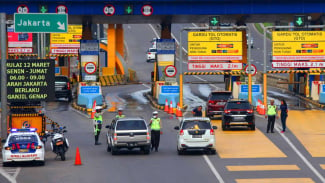- Antara/ MINISTRY OF COMMUNICATION & INFORMATION TECHNOLOGY
VIVAnews – The Natural Disaster Mitigation Agency (BNPB) revealed that the loss due to the natural disasters in some Asia Pacific countries approximately of 1 percent on average of the Gross Domestic Product (GDP).
In the case of Indonesia, from the tsunami disaster in Aceh to the eruption of Mount Merapi, the loss and damage caused by the natural disasters were estimated to total Rp95.96 trillion. Meanwhile, the government’s budget for disaster relief is only Rp4 trillion a year.
"For Indonesia, the impacts of the disasters are very palpable. The impacts are enormous," said BNPB Head of Information Data and Public Relations Sutopo Purwo Nugroho, in a press statement received by VIVAnews.com, Thursday, August 4, 2011.
Quoting the 2011 Global Assessment Report (GAR), BNPB stated the loss due to the catastrophes amounted to 1 percent of the GDP annually, equivalent to the losses suffered by the countries experiencing the global financial crisis in 1980 and the 1990s.
In fact, according to Asia Pacific Disaster Report 2010 report prepared by the United Nations Economic and Social Commission for Asia and the Pacific (UN-ESCAP) and United Nations International Strategy for Disaster Reduction, noted that the Asia-Pacific region, including Indonesia, produced a quarter of the world’s GDP.
However, the report says that in the last 30 years, 85 percent of deaths and 38 percent of global economic losses were caused by the natural disasters that hit the region.
"The potential economic disruption in social life is always there for the people living in disaster-prone areas such as Indonesia. The risk of natural disasters causes negative effects on development, especially economic," said Sutopo.
He deemed that Indonesia has suffered the economic impact of natural disasters, including when the tsunami hit Indonesia in 2004. At that time, the damage and economic losses due to the disaster was estimated to be Rp39 trillion.
Indonesia also had to go back to bear the economic losses after succeeding disasters hit the country. BNPB’s data shows that the earthquake in Yogyakarta and Central Java in 2006 caused losses and damages amounting to Rp27 trillion, the Jakarta flood in 2007 Rp4.8 trillion, the West Sumatra earthquake in 2009 Rp21.6 trillion, and the eruption of Merapi in 2010 excluding the impact of lava Rp3, 56 trillion.
"Compare this with the cost of building the Suramadu bridge of around Rp4.5 trillion and that of Jakarta Outer Ring Road (JORR) phase II stretching for 122.6 kilometers of Rp5 trillion. This means the impact of the disasters slows the pace of development down," said Sutopo.
This is in spite of, said Sutopo, the government's ability to allocate disaster reserve funds each year of only around Rp4 trillion. Moreover the funds are used for the relief of all disasters, be it of large or small scaled, that happened in all over Indonesia.
“We need to increase the allocation of these funds, or develop a mechanism of post-disaster funding systems, such as disaster insurance of which the premium is borne by the government," he said.
Translated by Indah Lestari




















